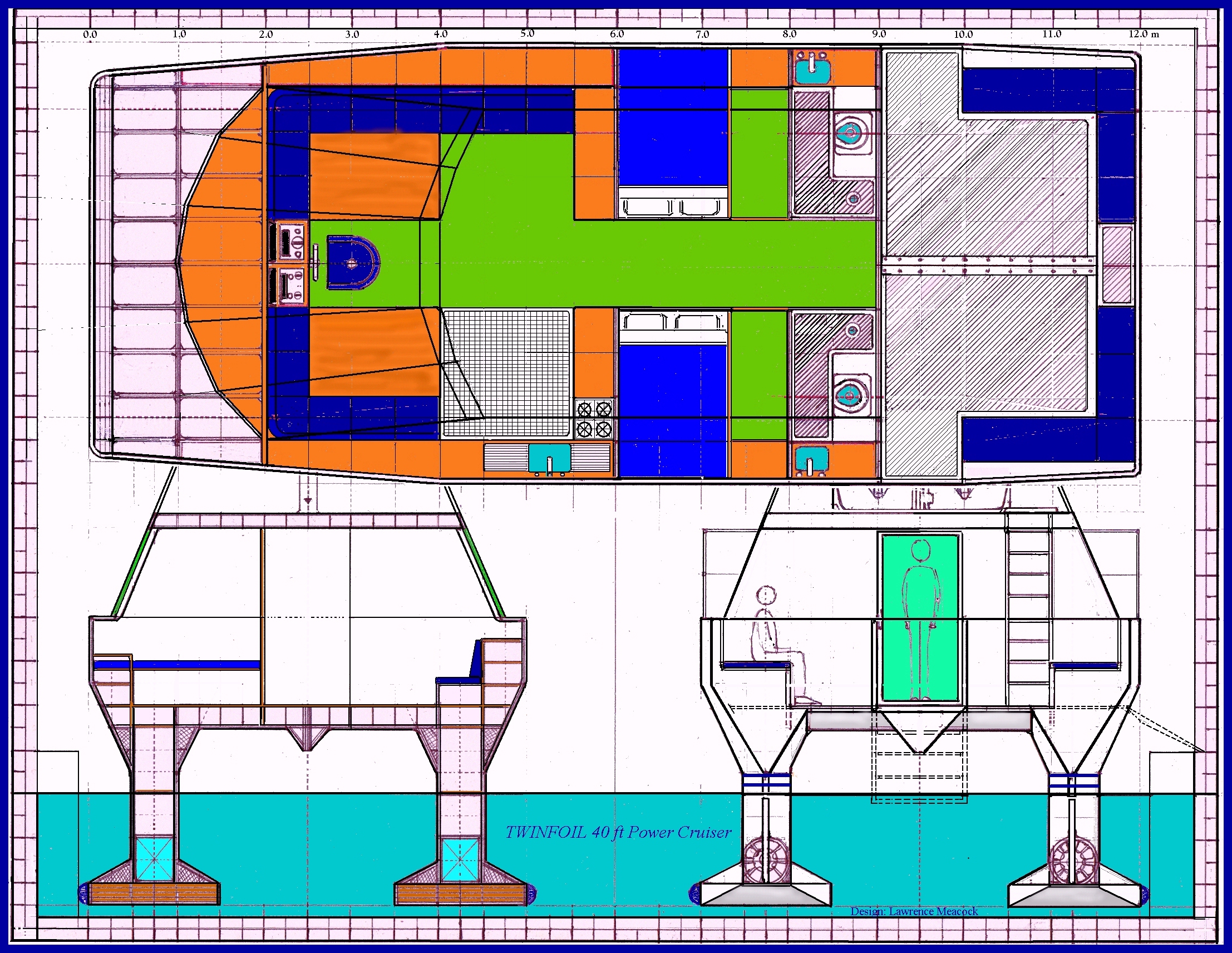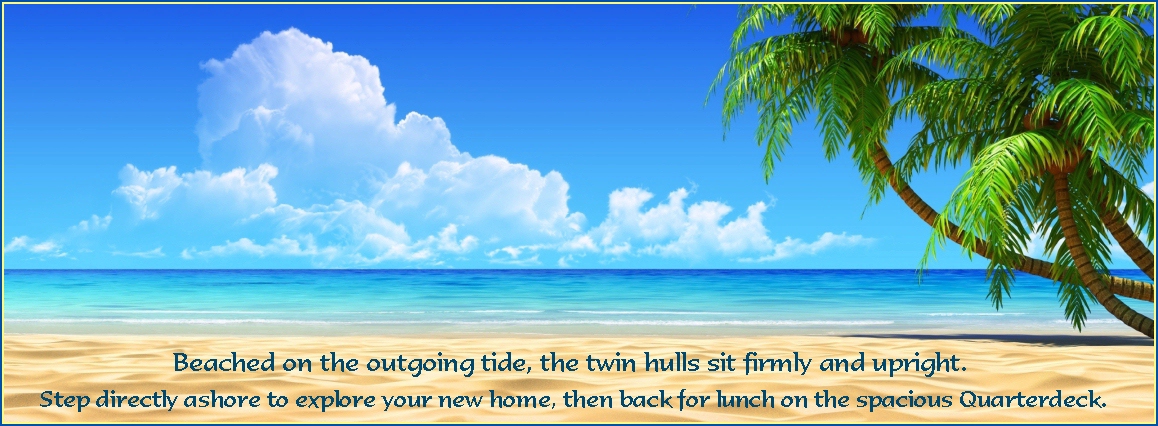
It has been generally established that the surface wave motion resistance on a hull provides the greatest hull resistance through the water, slowing down the whole craft. The surface wave motion even exceeds that of a large wetted surface area displacement area. Catamaran twin narrow width hulls provide a faster passage with minimum forward resistance. However, there is still a requirement for some extra ballast needed in the water to adequately support the craft, as does the extra hull surface area provided by the two linear foils in this design concept. Such a combination will result in a high degree of hull efficiency, along with higher speeds using less fuel, and a greater comfort provided by the twin linear foils giving a high a high degree of lateral stability at sea.
Construction materials envisaged for the 40-50ft range of TWINFOILS would be of fiberglass inner and outer moulded surfaces with a sandwich construction of 2-inch high density internal foam, along with twin linear internal keels constructed of laminated wood for extra strength and damage control. Having a total beam of 16’.4” (5m), they could also be built in two 8’.2” (2.50m) halves with interlocking centre-line surfaces which can be bolted together to provide suitable road transport capability for assembly at such areas as inland lakes.
Lawrence Meacock
Introducing the TWINFOIL Catamaran Concept
![]()

The 45-foot Twinfoil Cruising Catamaran
![]()



The 40-foot Twinfoil Cruising Catamaran
![]()
The 40-foot Twinfoil Power Cruiser
![]()


The 40-foot Twinfoil Passenger Catamaran
![]()


The 100-foot Twinfoil Passenger Catamaran
![]()


The TWINFOIL Catamaran Concept
![]()
